Healthy Fat Foods
 I hope you’ll want to learn more and let me help you to get into the best shape of your life.
I hope you’ll want to learn more and let me help you to get into the best shape of your life.
Some foods you think that are healthy are actually junk food in disguise. Once you learn the difference you will begin to see the changes you are looking for.
Chips, gooey desserts, anything that starts with fried are high in calories and you should know how to avoid these foods. What’s tricky is that some foods with healthy reputations are actually worse for your weight than you may think.
Sushi rolls: The veggies and seaweed wrap are low calorie, but a lot of the most popular rolls are slathered with cream cheese or mayonnaise and the seafood inside may be tempura battered. Thanks to these ingredients, a standard roll may have 500 to 600calories. Also, soy sauce is loaded with sodium. It won’t make you gain weight, but it’ll cause you to retain water.
Dried fruit: Cup for cup, dried fruit has five to eight times more calories than the fresh kind because it has been dehydrated and is much denser. Fresh grapes, for example, have 60 calories per cup, while raisins have 460. And many brands add sugar, which increases the calorie count.
Granola: Because it’s loaded with good for you nuts and oats, it’s too bad that they add oil to make it crisp and tons of sugar for more taste. One bowl racks up around 500 calories. Some cereals with the same nutrients but less oil and sugar pack half the calorie count.
Bran muffins: Whether it’s plain bran or mixed with apples or bananas, the fiber fills you up, but considering all the sugar and butter it delivers, a bran muffin is basically just a round slice of cake. One weighs in at about 20 grams of fat, 420 calories, and 34 grams of sugar.
Half & half: You put so little into your coffee, it seems like a harmless way to get calcium, especially when compared to full fat cream. But a few spoonfuls per cup of coffee two or three times a day quickly turns into 200 or more calories which is about the same amount of fat as a big pat of butter!
Wraps: No matter what you put in it, the average wrap is a major offender. If you roll the tortilla out, it can be 1 foot across and pack up to 300 calories. Since the surface area is way bigger than two slices of bread, you coat it with a lot more mayo or dressing than you would a sub or sandwich.
Bottled teas: Most brands have sugar or honey added, which are calorie sweeteners. One bottle can contain two or more servings, bringing the calorie count to almost 200 which is similar to a bottle of soda.
Rice cakes: These light snacks are fat free and low in calories, but they’re also completely lacking in fiber or protein, two ingredients that actually may help to curb hunger. Eating two or three won’t do anything but add more calories to your daily total and leave you craving something with substance. Limit the flavored kinds. They tend to have more sugar or sodium.
Veggie burgers: Skipping beef for a meat free patty may save you a little fat and cholesterol, but depending on the brand and what you put on it, you could easily end up eating more than 1,000 calories. The cheese that often binds the veggies together and the huge size of the burgers are anything but diet friendly. Add a bun and some ketchup and you might as well have had a regular burger.
Juice: Reaching your recommended daily fruit serving goal by getting it in liquid form may not be a great idea. A 16-ounce bottle of OJ or apple juice has 55 grams of carbohydrates, the equivalent of five slices of bread. And most of that is sugar, a whopping 12 spoonfuls of it.
Diet microwave meals: The lean ready to eat dishes tend to be high in sodium. Since the manufacturers can’t rely on calorie rich fat to make the stuff taste good, they resort to salt. As a result, eating them will make you retain water, especially in your arms and legs, leaving you puffy, instead of keeping you trim.
Salads: There’s nothing better for you or your waist than naked veggies, but the shredded cheese, candied nuts, croutons, and globs of dressing often make salads as high in calories as an oversize dish of pasta. Vinaigrettes, may not be as fattening as ranches, but can be almost as high calorie! If you must use a salad dressing there are many ‘lite’ and ‘low-cal’ versions to choose from.
Tofu: Order this “health food” at a restaurant and what you’ll most likely get is a plateful of sodium, calories, saturated fat, and even sugar. Tofu itself isn’t the issue. The problem is that the white stuff is so bland, it’s often deep fried to give it flavor and texture and served in decadent sauces, making it a diet disaster.
Here are some Habits that have been hyped as healthy but actually add fat to your midsection.
- You Skip Meals. This tactic always backfires. You end up so hungry later on that you can’t help but overeat. And when you do, more fat will find its way to your midsection. Eating small to medium size meals every three to four hours, fills you up without resulting in a layer of flab.
- You Go Vegetarian. Women will often avoid foods from the meat, fish, and dairy groups because they think they are packed with calories and fat. But remember, these foods are protein superstars that help boost your metabolism so you can fight off tummy fat. Opt for low-calorie, low-fat choices, like cottage cheese or tuna. One 6-ounce can fulfills three-quarters of your daily protein requirement.
- You Think Bread Is Bad. White bread, yes, but whole-grain breads and cereals, allow insulin levels to rise more gradually, reducing the chance that you’ll add fat to your belly. Wild rice, oatmeal, or whole-wheat tortillas once a day can make a difference.
- You’re Crunch Crazed. Sit-ups tone muscle, but they don’t have any effect on the layer of fat covering your ab muscles. Doing 50, 100, or even 500 crunches won’t make your jeans feel any looser. What does work? Cardio. Instead of wasting all your time on crunches, spend an extra 10 minutes on the treadmill.
- You Booze a Lot, but Infrequently. Alcohol has lots of calories yet doesn’t fill you up at all. So when you binge drink, you’re basically inviting flab to settle on your midsection.
- You Eat “Lite” Products. You may think you are doing your body a favor by opting for sugar free yogurt, diet soda, or any other snack labeled low-fat or low-cal. But these versions are often loaded with artificial sweeteners, which may trigger your metabolism to increase fat storage.
- You Think Fatty Foods Are the Enemy. Foods high in monounsaturated fats help burn off belly fat and help you to consume less.
Foods That Melt Flab Away
Cinnamon: Without going into the whole scientific explanation of why it works, adding 1/4 to 1 teaspoon of this spice to something you eat every day, hot cereal, marinades, yogurt, helps blood sugar get into your cells so they can be used for energy, so less is stored as fat.
Green Tea: One ingredient, caffeine, is a stimulant that raises your heart rate and tells your system to burn calories faster. Green tea also has catechins, a substance believed help burn belly fat. Aim for three 8-ounce cups a day. (Without the milk, cream or sugar)
Yogurt: Dairy has a bad rap for high calories, but yogurt, both the low-fat and regular kinds, contains probiotics, which are friendly bacteria that may actually help reduce the amount of fat your body absorbs.
Coffee: Caffeine kicks your metabolism into high gear. Caffeine also jump-starts lipolysis, the breakdown of fat. One to two cups a day is ideal. (Black is best)
Chili Peppers: Often found in high quantities in hot salsa as well as in many Thai, Indian and Chinese curry dishes. These wonder foods are packed with a metabolism boosting compound called capsaicin, which provides chili peppers’ fiery flavor. In addition, capsaicin increases your body temperature, giving your metabolism an extra calorie burning push.
Chicken and Fish: It actually takes energy to digest food, and your body burns more calories digesting and metabolizing protein than it does while breaking down carbs and fats. Consuming a few servings of lean protein, each day may help keep your metabolism burning fat, long after you finish eating your meal.
Take the first step to achieving healthy blood sugar metabolism and sustained good health right now! And begin by reading ‘get fit stay fit’ ‘The best you can be’ and listening to my audio cd’s which are comprehensive, yet tailored to meet your individual needs. You have the power to shape your body for better health.
I know you want to get in shape and look great. Whatever your fitness goal…to slim down…gain muscle…tone your arms or flatten your tummy…I’m here to help you accomplish your goals and to improve your fitness level. If you have enjoyed this article and the many other free features on my site, and would like some more comprehensive information such as fitness books and CD’s to aid you in achieving your health and fitness goals, please visit my ONLINE STORE where you will find innovative natural health and beauty products to help you become the BEST YOU CAN BE !


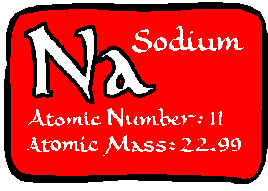 The following article is a small excerpt from one of my books. I hope you’ll want to learn more and let me help you to get into the best shape of your life.
The following article is a small excerpt from one of my books. I hope you’ll want to learn more and let me help you to get into the best shape of your life.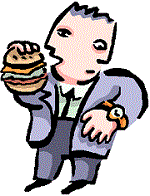 The following article is a small excerpt from one of my books. I hope you’ll want to learn more and let me help you to get into the best shape of your life.
The following article is a small excerpt from one of my books. I hope you’ll want to learn more and let me help you to get into the best shape of your life.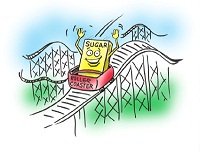 I hope you’ll want to learn more and let me help you to get into the best shape ofyour life.
I hope you’ll want to learn more and let me help you to get into the best shape ofyour life. I hope you’ll want to learn more and let me help you to get into the best shape of your life.
I hope you’ll want to learn more and let me help you to get into the best shape of your life. The following article is a small excerpt from one of my books. I hope you’ll want to learn more and let me help you to get into the best shape of your life.
The following article is a small excerpt from one of my books. I hope you’ll want to learn more and let me help you to get into the best shape of your life. ou’ll want to learn more and let me help you to get into the best shape of your life.
ou’ll want to learn more and let me help you to get into the best shape of your life. The following article is a small excerpt from one of my books. I hope you’ll want to learn more and let me help you to get into the best shape of your life.
The following article is a small excerpt from one of my books. I hope you’ll want to learn more and let me help you to get into the best shape of your life.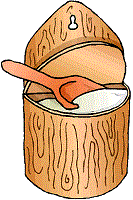 The following article is a small excerpt from one of my books. I hope you’ll want to learn more and let me help you to get into the best shape of your life.
The following article is a small excerpt from one of my books. I hope you’ll want to learn more and let me help you to get into the best shape of your life.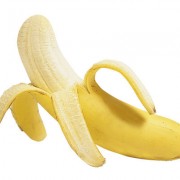 I hope you’ll want to learn more and let me help you to get into the best shape of your life.
I hope you’ll want to learn more and let me help you to get into the best shape of your life.  Depression: According to a recent survey undertaken with people suffering from depression, many felt much better after eating a banana. This is because bananas contain tryptophan, a type of protein that your body converts into serotonin, known to make you relax, improve your mood and generally make you feel happier.
Depression: According to a recent survey undertaken with people suffering from depression, many felt much better after eating a banana. This is because bananas contain tryptophan, a type of protein that your body converts into serotonin, known to make you relax, improve your mood and generally make you feel happier.